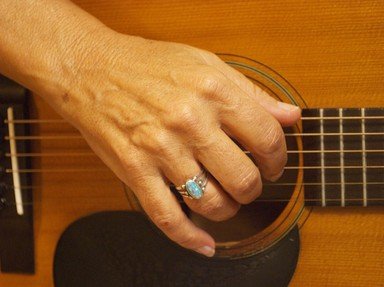Quiz Answer Key and Fun Facts
1. There have been several popular interpretations of what the House of the Rising Sun might represent. Which is NOT one of them?
2. When this song reached the American South, the location of the House of the Rising Sun shifted to what city?
3. Five Finger Death Punch, in their version of the song, change the location of the House of the Rising Sun to what city?
4. The earliest known recording of this song was released by two Appalachian musicians named Clarence "Tom" Ashley and Gwen Foster. In what decade was it recorded?
5. The oldest published version of this song appeared in Adventure magazine. That version said the House of the Rising Sun has "been the ruin of many a poor" what?
6. What American folk singer and songwriter, known for "This Land Is Your Land," recorded an early version of this song in 1941?
7. What bluesman, whose real first name was Huddie, recorded two versions of this song in 1944 and 1948?
8. What comedian, actor, and television father of Opie recorded a version of this song on his 1958 album "_____ Shouts the Blues and Old Timey Songs"?
9. What young folk singer and eventual winner of the Nobel Prize in Literature heard this song from Dave Van Ronk and then recorded it on his 1962 debut album?
10. What bluesy British rock group made "The House of the Rising Sun" famous in the U.S. and the U.K. after releasing it as a single from their self-titled album in 1964?
11. What Detroit-based band recorded a psychedelic version of "House of the Rising Sun" on their self-titled 1970 album?
12. What country music singer, who covered this song on the 1981 album "9 to 5 and Odd Jobs," changed the lyrics to say, "And I've worked since then / to please the men / at the House of the Rising Sun"?
13. In different versions of this song, different people are told not to go to the House of the Rising Sun and not to do what the singer has done. Which of the following is NOT a person being advised to avoid the House of the Rising Sun in any well-known version of the song?
14. "My mother was a ____." What was the singer's mother in most versions of this song?
15. There are several variations on a particular line from this song. Which is NOT one of those common variations?
16. What's the "only thing a" gambler (or drunkard) "needs"?
17. "The only time he's satisfied is when he's on a ___" what?
18. "He fills his glasses up to the" what?
19. "And the only pleasure he gets out of life is rambling from" what to what?
20. "Well with one foot on the platform and the other foot on the _____ / I'm going back to New Orleans to wear that ball and chain." What word is missing from these lyrics?
Source: Author
skylarb
This quiz was reviewed by FunTrivia editor
1nn1 before going online.
Any errors found in FunTrivia content are routinely corrected through our feedback system.

